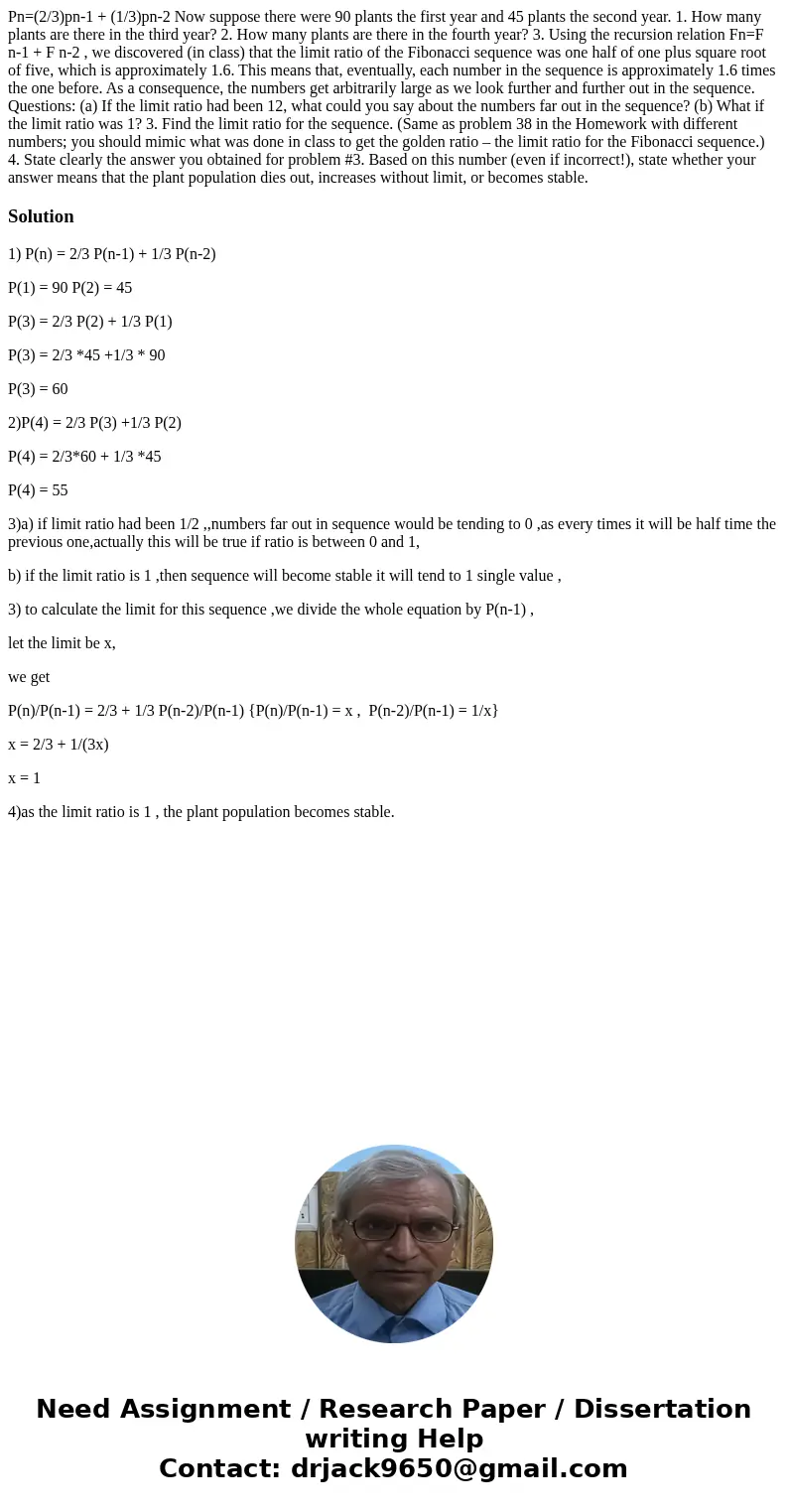Pn23pn1 13pn2 Now suppose there were 90 plants the first ye
Pn=(2/3)pn-1 + (1/3)pn-2 Now suppose there were 90 plants the first year and 45 plants the second year. 1. How many plants are there in the third year? 2. How many plants are there in the fourth year? 3. Using the recursion relation Fn=F n-1 + F n-2 , we discovered (in class) that the limit ratio of the Fibonacci sequence was one half of one plus square root of five, which is approximately 1.6. This means that, eventually, each number in the sequence is approximately 1.6 times the one before. As a consequence, the numbers get arbitrarily large as we look further and further out in the sequence. Questions: (a) If the limit ratio had been 12, what could you say about the numbers far out in the sequence? (b) What if the limit ratio was 1? 3. Find the limit ratio for the sequence. (Same as problem 38 in the Homework with different numbers; you should mimic what was done in class to get the golden ratio – the limit ratio for the Fibonacci sequence.) 4. State clearly the answer you obtained for problem #3. Based on this number (even if incorrect!), state whether your answer means that the plant population dies out, increases without limit, or becomes stable.
Solution
1) P(n) = 2/3 P(n-1) + 1/3 P(n-2)
P(1) = 90 P(2) = 45
P(3) = 2/3 P(2) + 1/3 P(1)
P(3) = 2/3 *45 +1/3 * 90
P(3) = 60
2)P(4) = 2/3 P(3) +1/3 P(2)
P(4) = 2/3*60 + 1/3 *45
P(4) = 55
3)a) if limit ratio had been 1/2 ,,numbers far out in sequence would be tending to 0 ,as every times it will be half time the previous one,actually this will be true if ratio is between 0 and 1,
b) if the limit ratio is 1 ,then sequence will become stable it will tend to 1 single value ,
3) to calculate the limit for this sequence ,we divide the whole equation by P(n-1) ,
let the limit be x,
we get
P(n)/P(n-1) = 2/3 + 1/3 P(n-2)/P(n-1) {P(n)/P(n-1) = x , P(n-2)/P(n-1) = 1/x}
x = 2/3 + 1/(3x)
x = 1
4)as the limit ratio is 1 , the plant population becomes stable.

 Homework Sourse
Homework Sourse